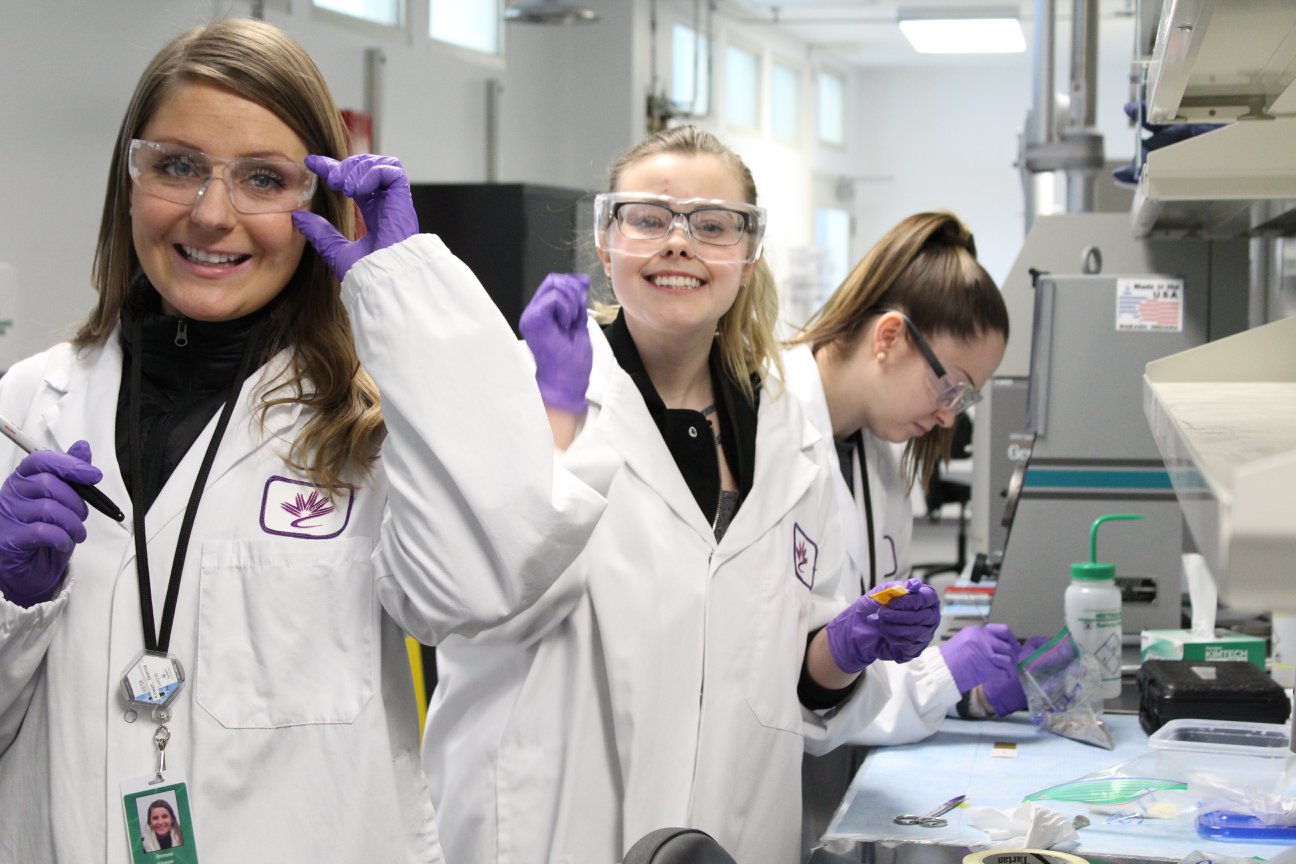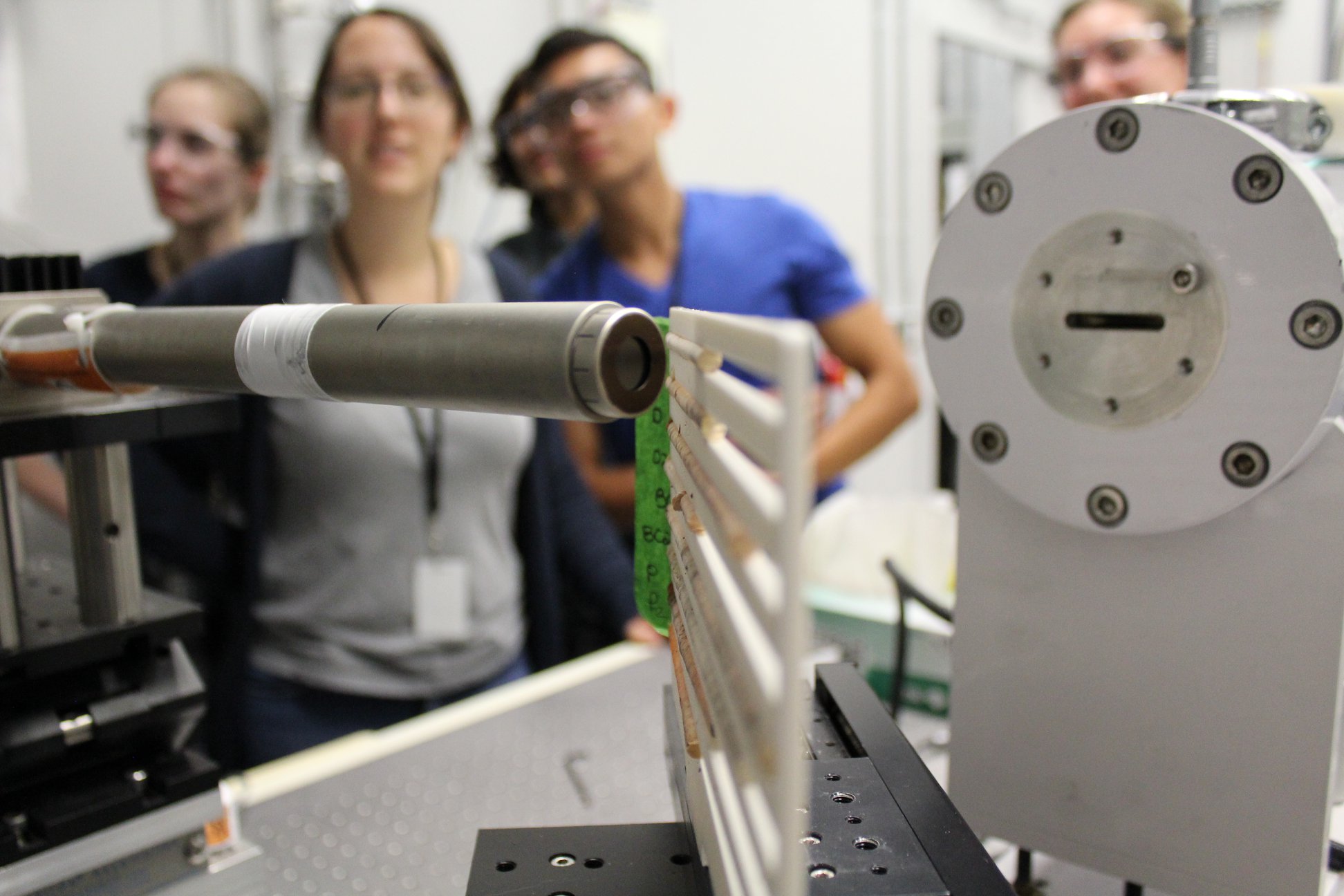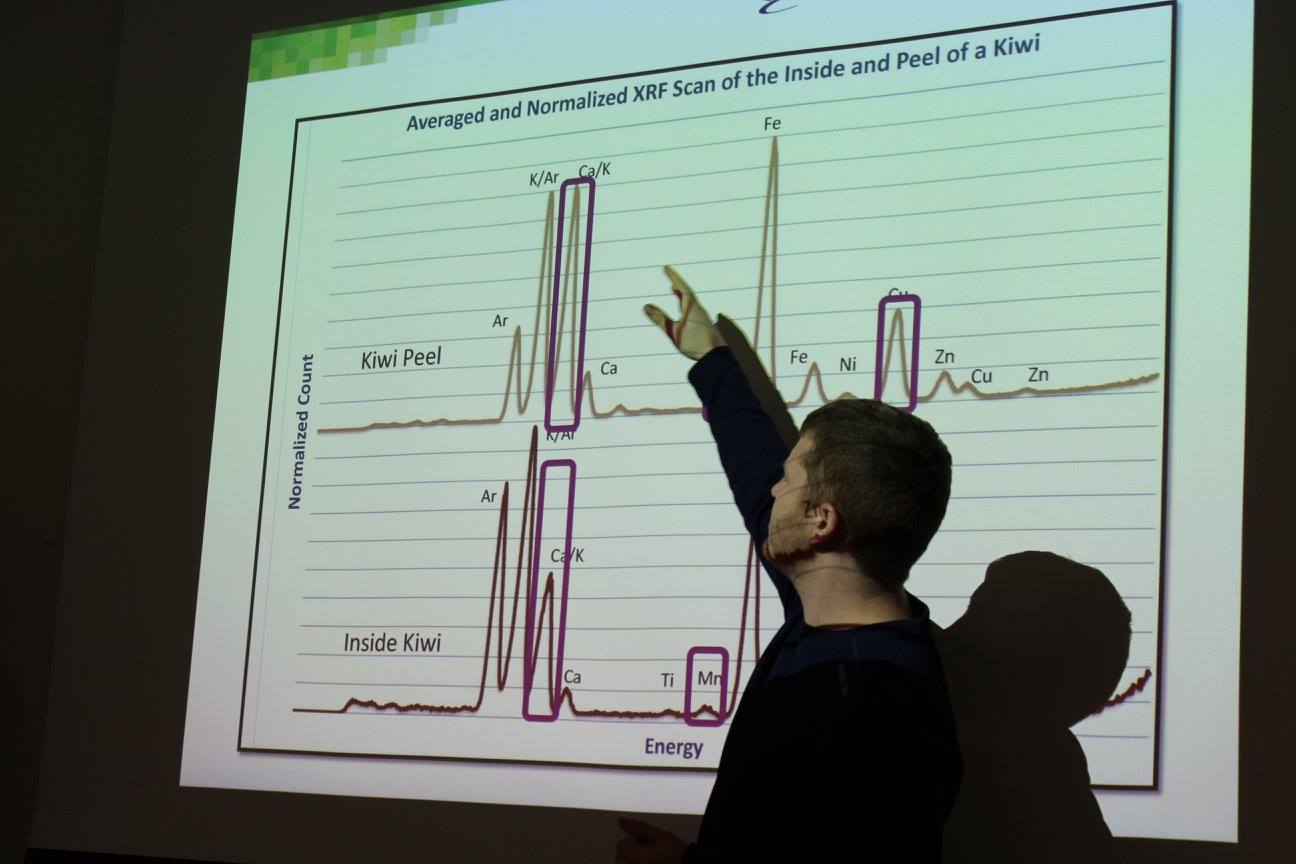Our Post-Secondary Education Programs offer the opportunity for students in post-secondary to take part in synchrotron research offered through a course. This program is flexible and we work with faculty to ensure the student experience meets the intended outcomes for learning. See below a few case studies of how this looks with an Integrated Project, Lab-Based Experience, or Group Research Project. If you are looking for a guest-speaker or seminar for your course, check out our Seminars page for how the Education Team can help.
Integrated Project
- Video on the CMRS/CHEM 398 course by the Museum of Antiquities
"Crossing Beams: An Intersection of Disciplines"

 Focused on synchrotron spectrochemical analysis, this course is offered to fourth year chemistry students and was taught by faculty (Tom Ellis) and beamline staff (Scott Rosendahl) with support from other beamline staff and the Education Programs Lead (Tracy Walker). It is a project-based course intended to give students introductory experience with several analytical techniques, both within a chemistry laboratory atmosphere and with a synchrotron, as well as within a simulated business setting. Students participate in several smaller projects, some of which require data collection and analysis at one or more beamlines throughout the course.
Focused on synchrotron spectrochemical analysis, this course is offered to fourth year chemistry students and was taught by faculty (Tom Ellis) and beamline staff (Scott Rosendahl) with support from other beamline staff and the Education Programs Lead (Tracy Walker). It is a project-based course intended to give students introductory experience with several analytical techniques, both within a chemistry laboratory atmosphere and with a synchrotron, as well as within a simulated business setting. Students participate in several smaller projects, some of which require data collection and analysis at one or more beamlines throughout the course.
Lab-Based Experience
Sometimes the student-driven research project does not quite fit to be integrated into a post-secondary course, so some instructors have included it within the lab-based activities. The research topic that the students do tends to be more guided and structured to ensure success in the limited time that is offered. This method can work well with introductory courses or Adult Basic Education classes. Here is an example done with the University of Saskatchewan EVRS 110 - FYRE Project:
 The University of Saskatchewan First Year Research Experience projects across the campus. In Environmental Sciences 110 taught by Colin Laroque in the College of Agriculture and Bioresources, students have a choice to opt in for a larger student-driven synchrotron-based research experience as opposed to a smaller project that is combined with a more typical lab experience. Several students that have opted for the synchrotron-based experience, have then joined the Mistik Askîwin Dendrochronology (MAD) Lab as research assistants, grad students, or for their undergraduate thesis work.
The University of Saskatchewan First Year Research Experience projects across the campus. In Environmental Sciences 110 taught by Colin Laroque in the College of Agriculture and Bioresources, students have a choice to opt in for a larger student-driven synchrotron-based research experience as opposed to a smaller project that is combined with a more typical lab experience. Several students that have opted for the synchrotron-based experience, have then joined the Mistik Askîwin Dendrochronology (MAD) Lab as research assistants, grad students, or for their undergraduate thesis work.
- Check out the MAD Lab website and a story on the synchrotron-based experience
"FYRE on the Beamline"
Group Research Project
Another way that a research project has been incorporated into a post-secondary course is by offering it as an assignment. Here is an example done with the University of Saskatchewan:
 ECUR Courses
ECUR Courses
Tim Molnar, faculty in the College of Education, often offers the opportunity to conduct a synchrotron-based research project as part of his courses for future teachers. This has been offered in an introductory science course as well as both elementary and senior science teaching methods courses. The size and scope of these project vary with course outcomes and are developed collaboratively with the Education Programs Lead.
